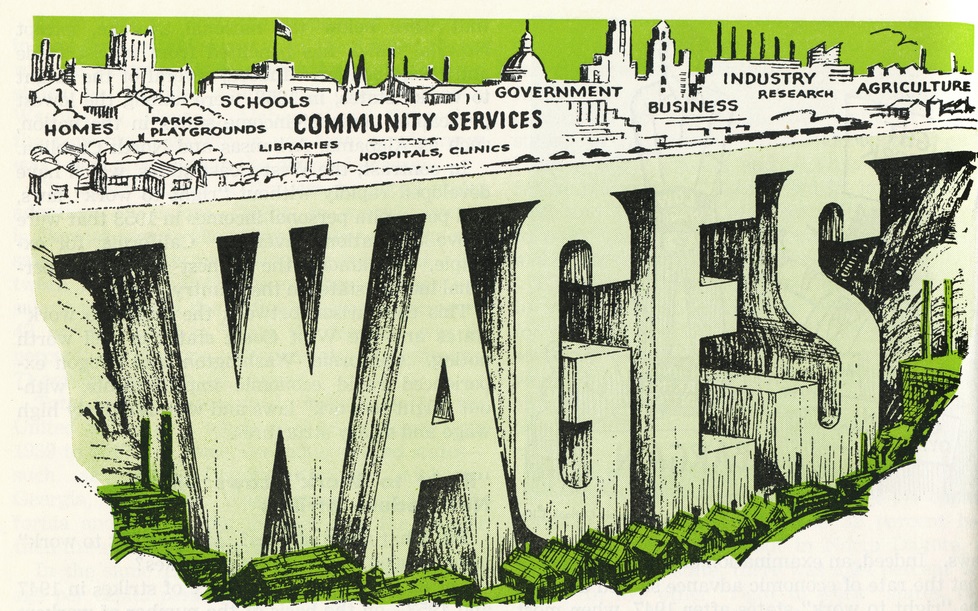
The U.S. is engaged in what will be, in the words of our commander in chief, “a lengthy war, a different kind of war, fought on many fronts in many places.” The war on terrorism is an extraordinary national enterprise because, among other things, its scale, scope and duration are undefined. Add to that the messy and unending fallout created by the war’s initial battles in Iraq, as well as in Afghanistan, and you get a foggy state of affairs.
To clear away the fog, use a historical perspective. History tells us that opportunistic interest groups exploit wars, economic depressions and other crises. Laws are enacted, bureaus are created, budgets are enlarged, new taxes are imposed and inflation eventually rears its head. In most cases, what was advertised as “temporary” becomes permanent.
Take the Great Depression. Farm lobbies, having unsuccessfully sought subsidies for decades, took advantage of the crisis to obtain a sweeping rescue package, the Agricultural Adjustment Act, whose declared purpose was to be “an act to relieve the existing national emergency.” Seventy years later the emergency is still with us and farmers are still being fertilized by the U.S. Treasury. Trade talks in Cancún blew up precisely because the U.S. (and Europe) were unwilling to relinquish farm subsidies.
But there is nothing like a war to create opportunities in Washington. During the Second World War, when the government absorbed nearly half the nation’s economic output, every special interest group under the sun tried to tap into the vastly enlarged federal budget. Even bureaus seemingly remote from the war effort, such as the Department of the Interior, claimed to be performing “essential war work” and therefore were entitled to bigger budgets and more personnel.
Not surprisingly, the war on terrorism has not caught Washington’s rent-seekers flat-footed. The latest call to arms has given cover to a multitude of parochial opportunists. Their proposals range from bailing out airlines to nationalizing vaccine production. The war has also given a major shot in the arm to what has rapidly become a ubiquitous security industry.
The effects on federal spending, which have gone largely unnoticed, are shocking. The annual increase in real federal spending during the current Bush Administration is 5.5%, and that percentage does not include the supplemental appropriation of $87 billion for Iraq. To put that rate of growth into perspective, the annual real growth in federal spending during the Vietnam-Great Society spending spree of the Kennedy-Johnson years was 4.8%.
If that doesn’t worry you, take note that the increase in real discretionary spending—the type of spending over which the President has the most control—has shot up 9.6% annually. That figure would have been lower if President Bush had bothered to apply his veto pen to even one appropriation bill.
What about taxes? Yes, the Bush Administration has delivered cuts. Enjoy them while you can. Wars are expensive and eventually have to be paid for. And big tax reductions are vulnerable to Washington’s whittling ways. Just look at what happened to President Reagan’s supply-side tax cut of 1981. Less than a year later the Gipper put his pen to another tax law that raised taxes by almost 1% of GDP, making it the biggest peacetime tax increase in American history. And that was not all. In every subsequent year of Reagan’s presidency, with the exception of 1988, Congress passed and Reagan signed tax increases.
The wages of war are always the same: a more obese and intrusive government and, yes, more inflation, too. The prices of precious metals and other commodities, an early indication of inflation, are already in a bull-market phase.
Faced with these prospects, what should an investor do? Dump conventional bonds and position the core of your portfolio (65%) in inflation-protected government bonds. The easiest way to do this is through mutual funds, such as the Pimco Real Returnt, Vanguard Inflation-Protected Securities or the Fidelity Inflation-Protected Bond funds. Only 15% should be allocated to the stock market, a risky place to be when trouble is about to descend on the market for bonds (the unindexed ones). The cheapest and safest way to get that 15% exposure is with an index fund or exchange-traded market basket.
That leaves 20% of your portfolio, and this portion should be positioned to profit from rising prices and a volatile dollar. Put half—that is, 10% of your portfolio—in commodities. Don’t buy commodity producers (like oil companies); buy the commodities themselves in the futures market. The other half of this more risky allocation should be in foreign currencies. Futures or options, like the ones traded on the Chicago Mercantile Exchange, are the way to do it.
Author Steve H. Hanke

0 responses on "The Wages of War"